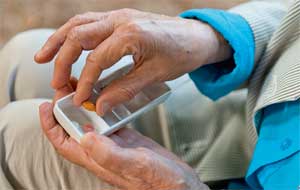
Pathways through pain
Managing your pain
"Understanding the basics of your pain will help us discover where the problem might lie."
Joanne O'Brien, Registered Advanced Nurse Practitioner (RANP) in Pain Management, Beaumont Hospital Pain Clinic
Questions to ask yourself to help your healthcare professional understand you pain:
- What makes the pain better and what makes it worse?
- Where is it coming from and where is it going?
- What type of pain is it? What words would you use to describe it?
- What is your pain score between 0 and 10? (0 = no pain, 10 is severe pain)
- Is it there all the time?
- What activities have you had to stop due to pain?
- How does your activity differ on high vs. low pain days?
- What are you currently doing to manage your pain when in a flare up (when pain is 10/10)?
Self-management
Self-management aims to improve your health and well-being by managing the impact pain has on your life. Engaging in an active management plan may help reduce pain symptoms, improve mood and increase function1. It's important to identify the self-management techniques that work for you.
Acceptance
Accepting your pain and learning to pace your daily activities are very important. This will help you take control and allow you to self-manage long-term. Acceptance is not "giving up" or allowing the pain to "win", instead it involves stepping out of unhelpful pain producing cycles and engaging in self-management strategies to increase your quality of life.
Pacing
Pacing is never doing too much and taking breaks before you need them throughout the day. When you pace your activities, you spread more over the day, making them more manageable. Try to remember to do the same level of activity on your good days as well as your bad. This will help avoiding the underactivity-over activity cycle. If you do too much on a good day it may cause a flare-up the next day, forcing you to rest.
Support
Build a team to help you manage your pain. People like your healthcare professionals, family and friends can offer you support during bad days. Look for support groups in your community or online that will help you manage your pain.
Setting goals
Setting daily, weekly and monthly goals and targets allows you to decide what you want to achieve. It gives you something to focus on and aim for. This means regaining some control of your life and thus making you feel better mentally and physically. Set yourself small goals every day and listen to your body.
Identify your goals by identifying what changes are important to you. Think of things you have stopped doing, don't do as much as you used to or even something new you would like to try.

It may help to choose from the following:
- Family life
- Social and leisure
- Household activities
- Self-care
- Work if appropriate
It might be a good idea to set short term and long term goals
An example could be:
- Short term: I would like to be able to walk one mile in 4 weeks
- Long term: I would like to walk a mini marathon with my friends in 6 months
Taking your medication

Follow or ask the advice of your GP about medication and when you need to take it. If you have to take regular medication think of ways to remind yourself to take it. Use post it notes, a timer or get someone to remind you. Sometimes you may think it is better to wait until the pain is very bad before taking your medication, but it is better to take simple/mild pain medication regularly and prevent the pain from building. Don't skip a dose because you think your pain is gone - remember it decreased because you were taking your medication regularly.
Please remember that taking medication if you have musculoskeletal pain (back, leg, arm, neck etc.) may mask the pain and encourage you to do more so it is still important to pace your activities over the course of the day.
-
References
1. Bussing et al. Adaptive coping strategies in patients with chronic pain conditions and their interpretation of disease. http://bmcpublichealth.biomedcentral.com/articles/10.1186/1471-2458-10-507.







